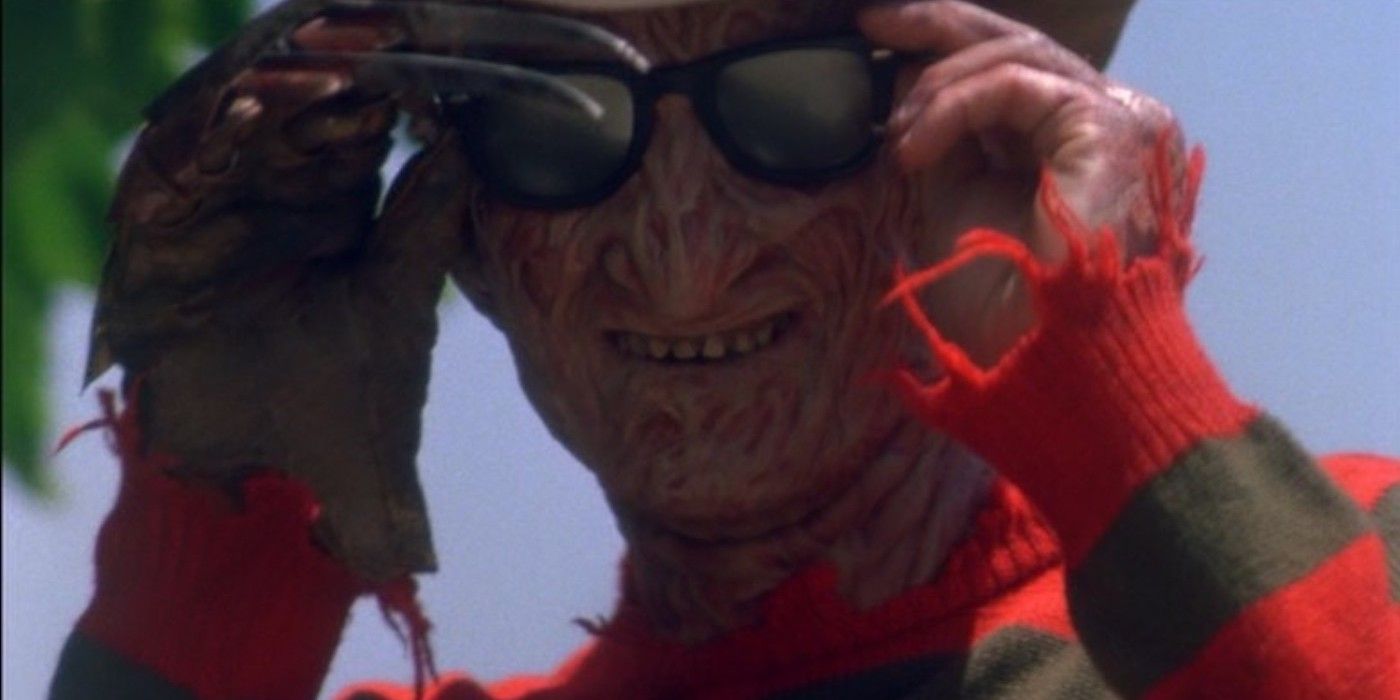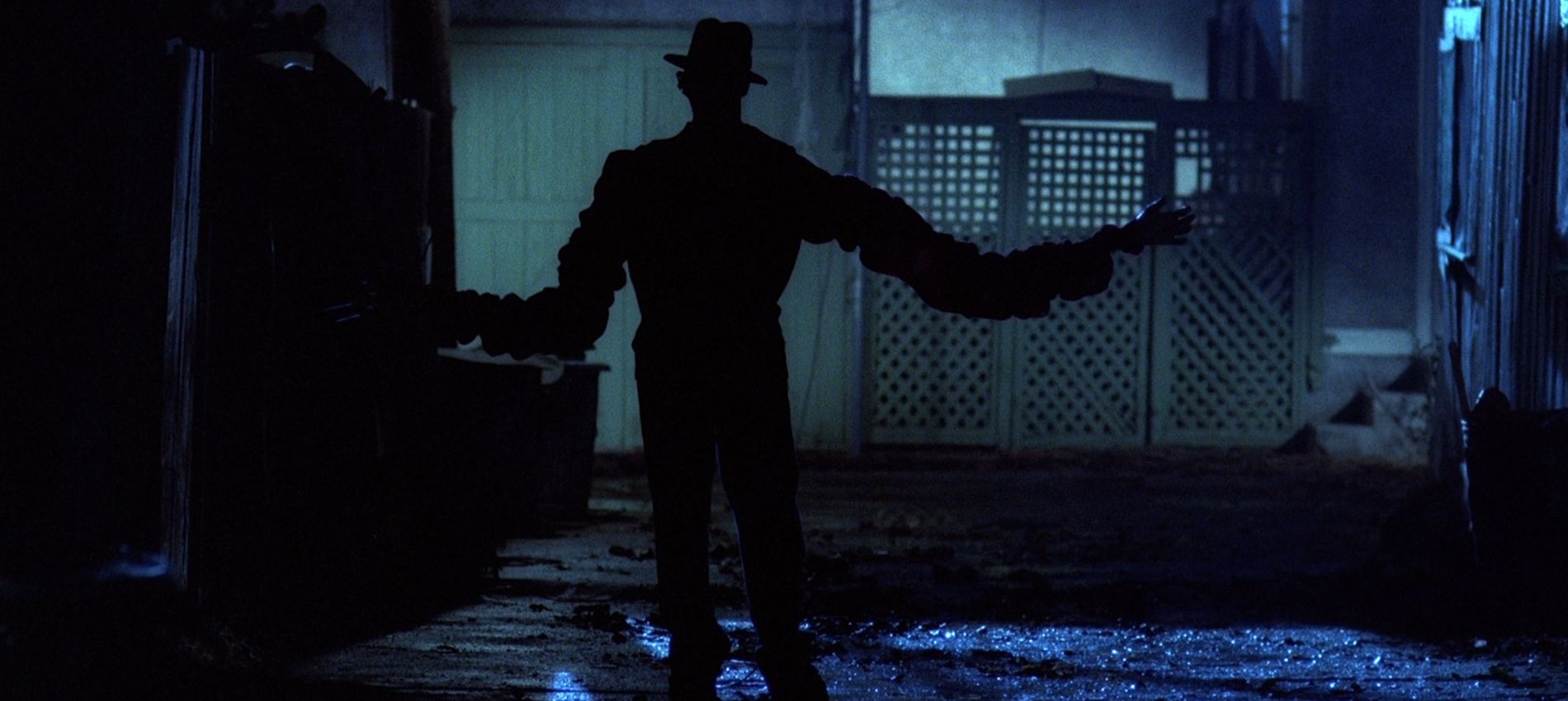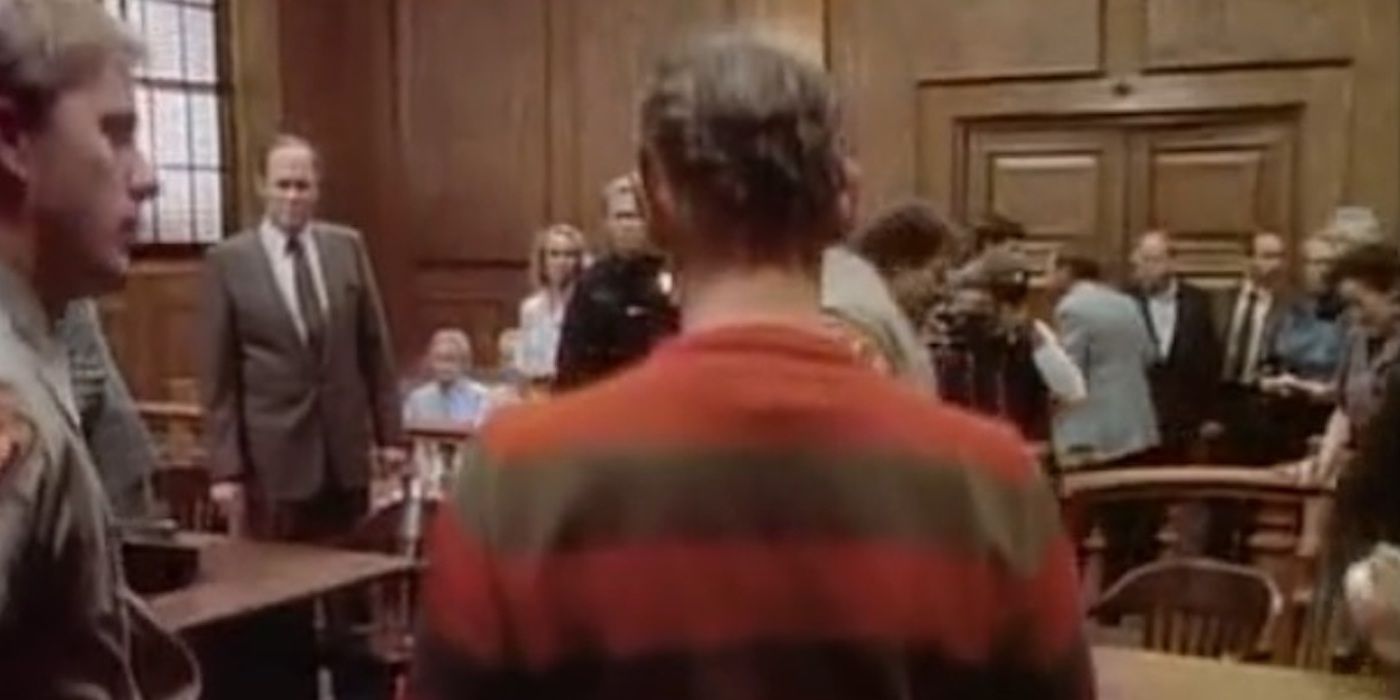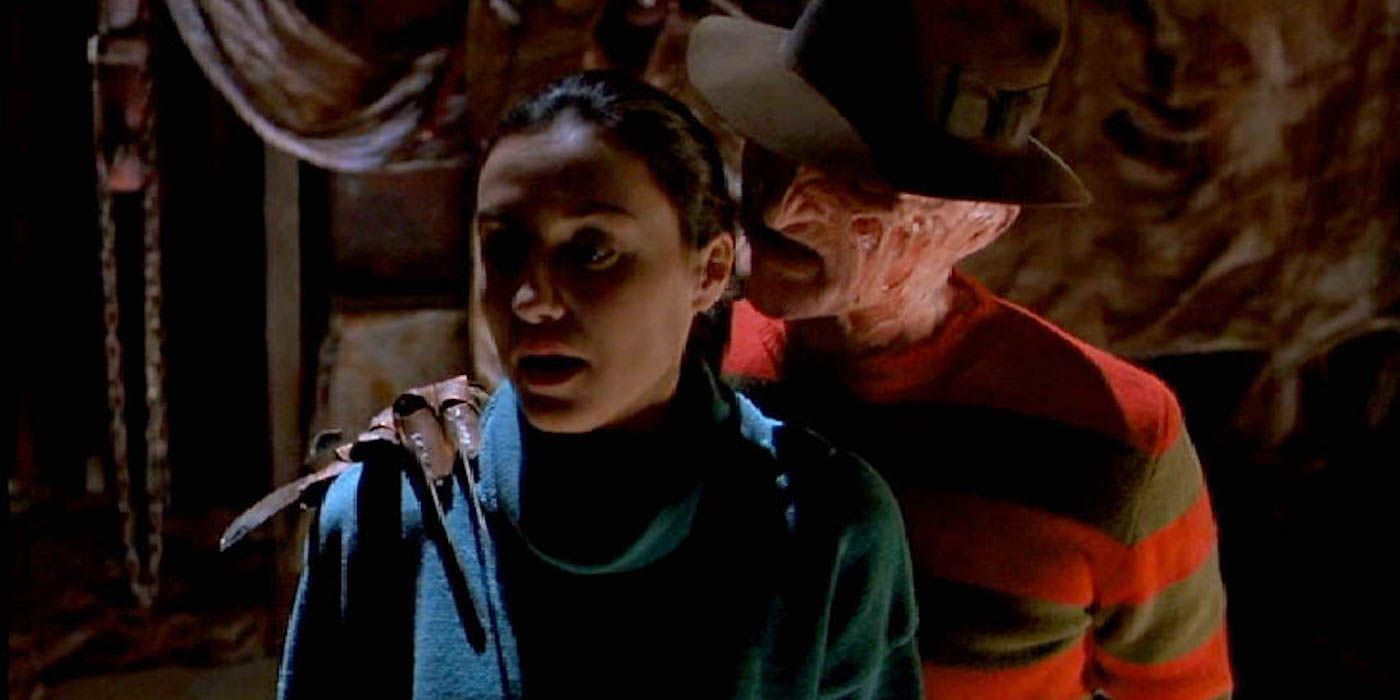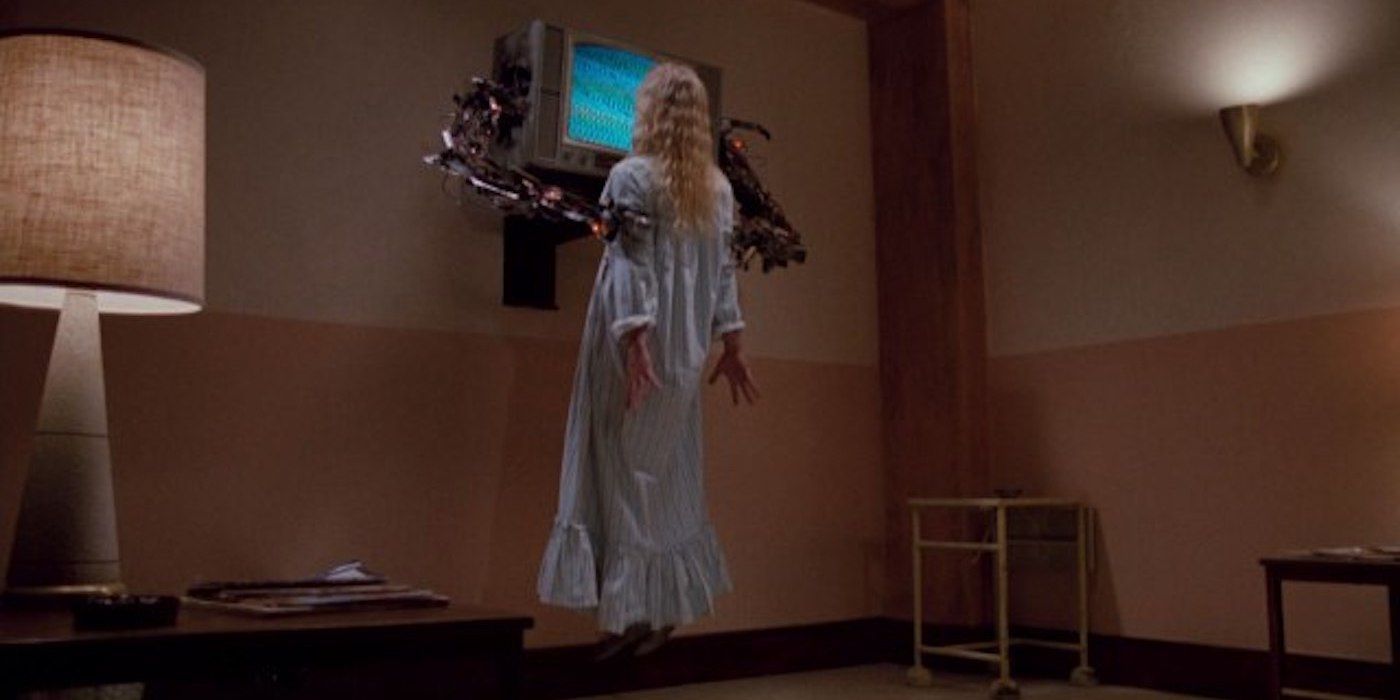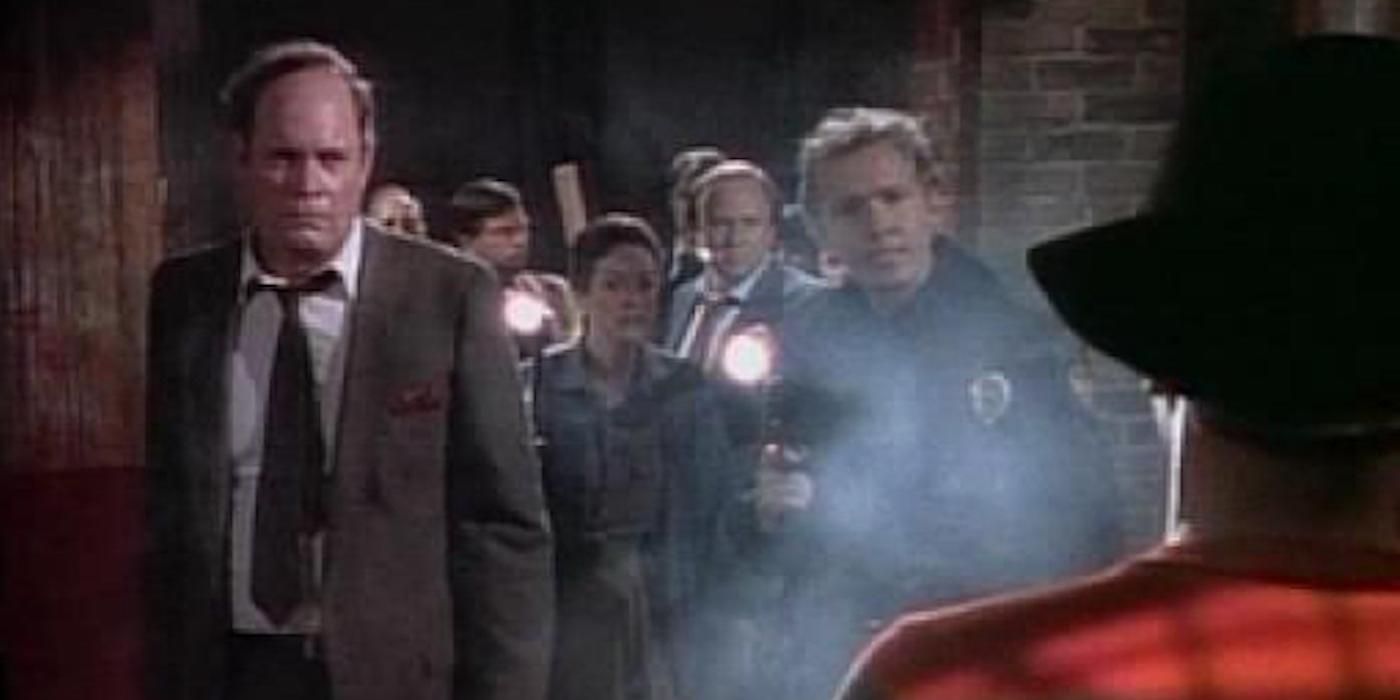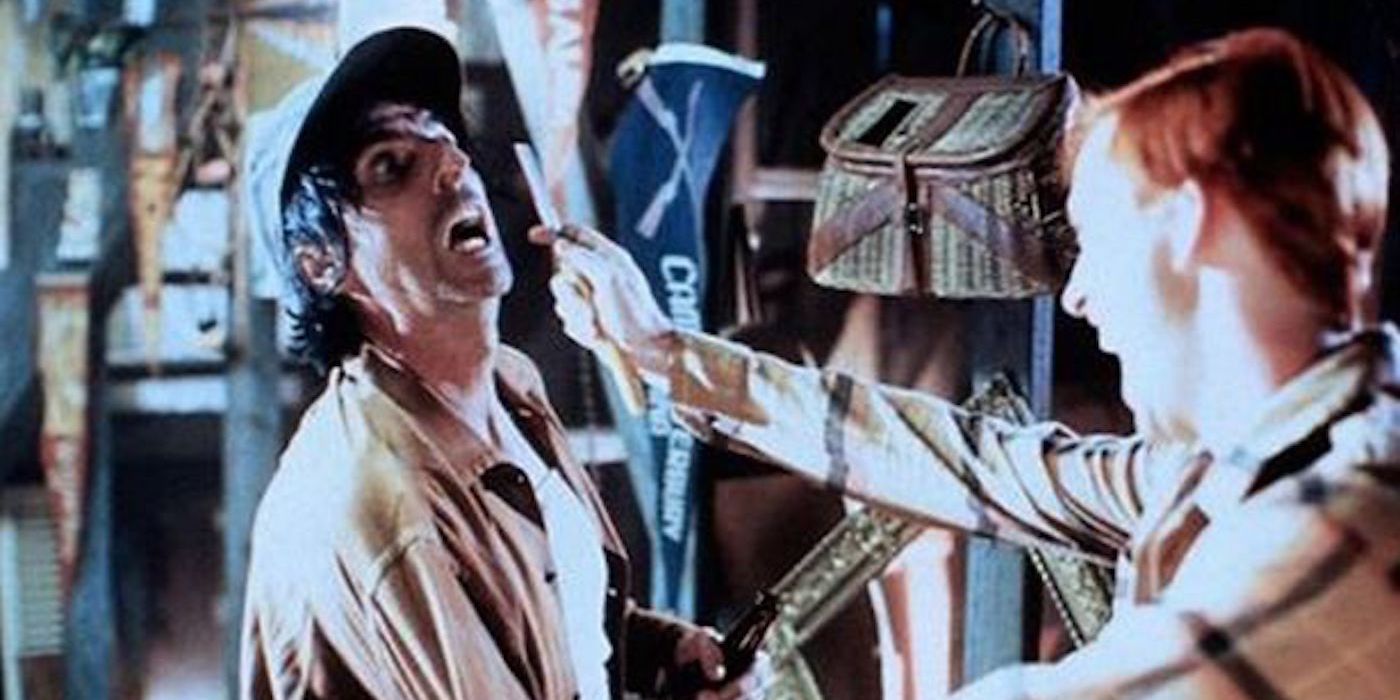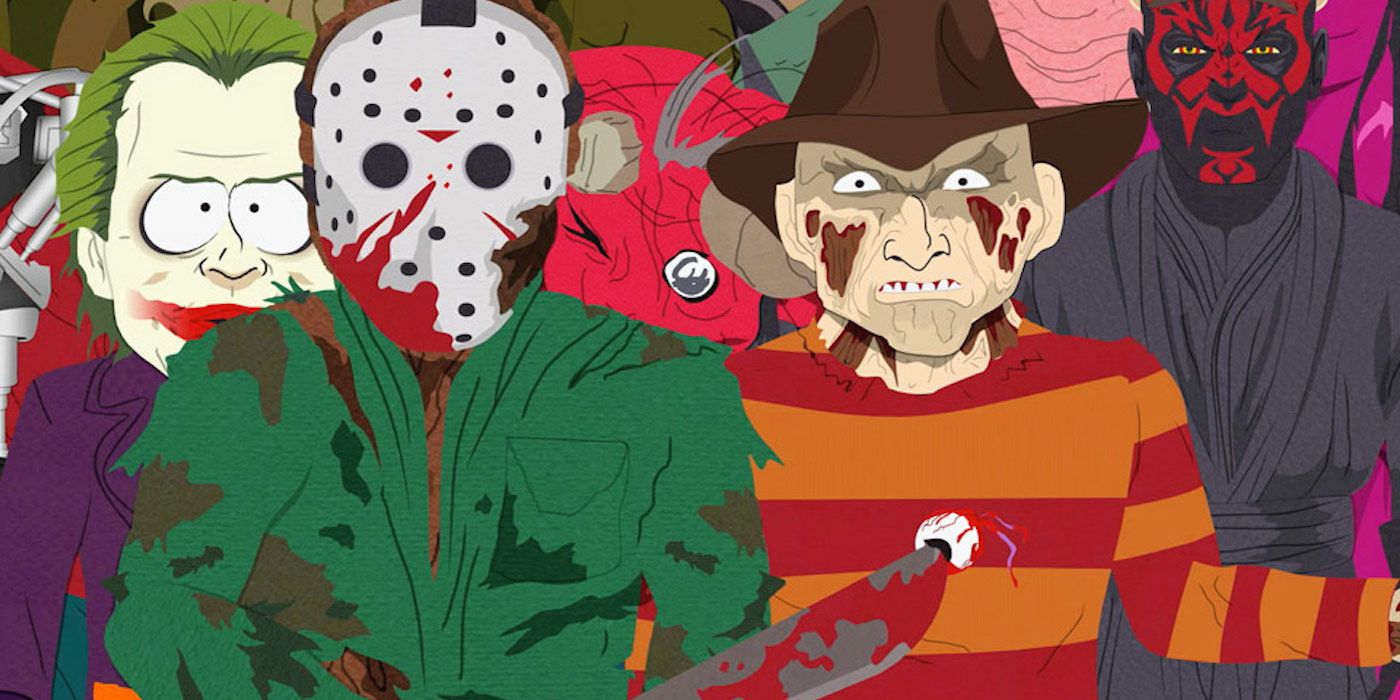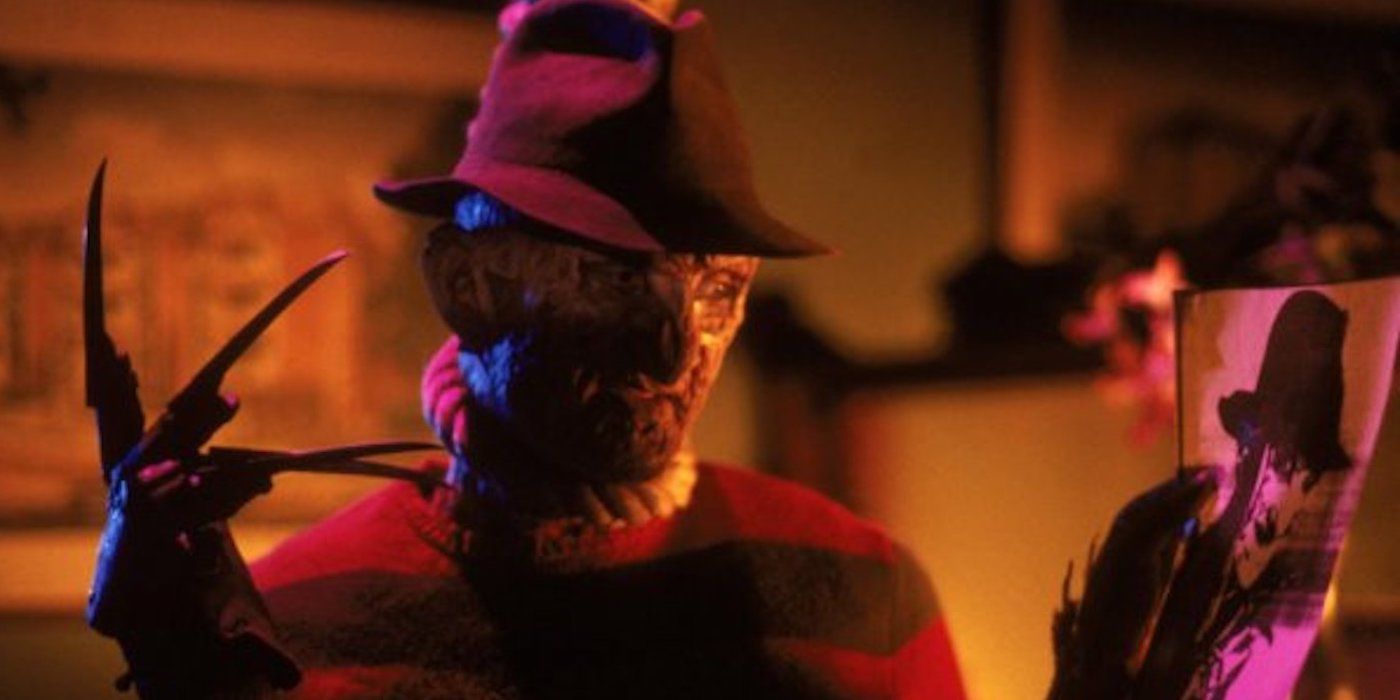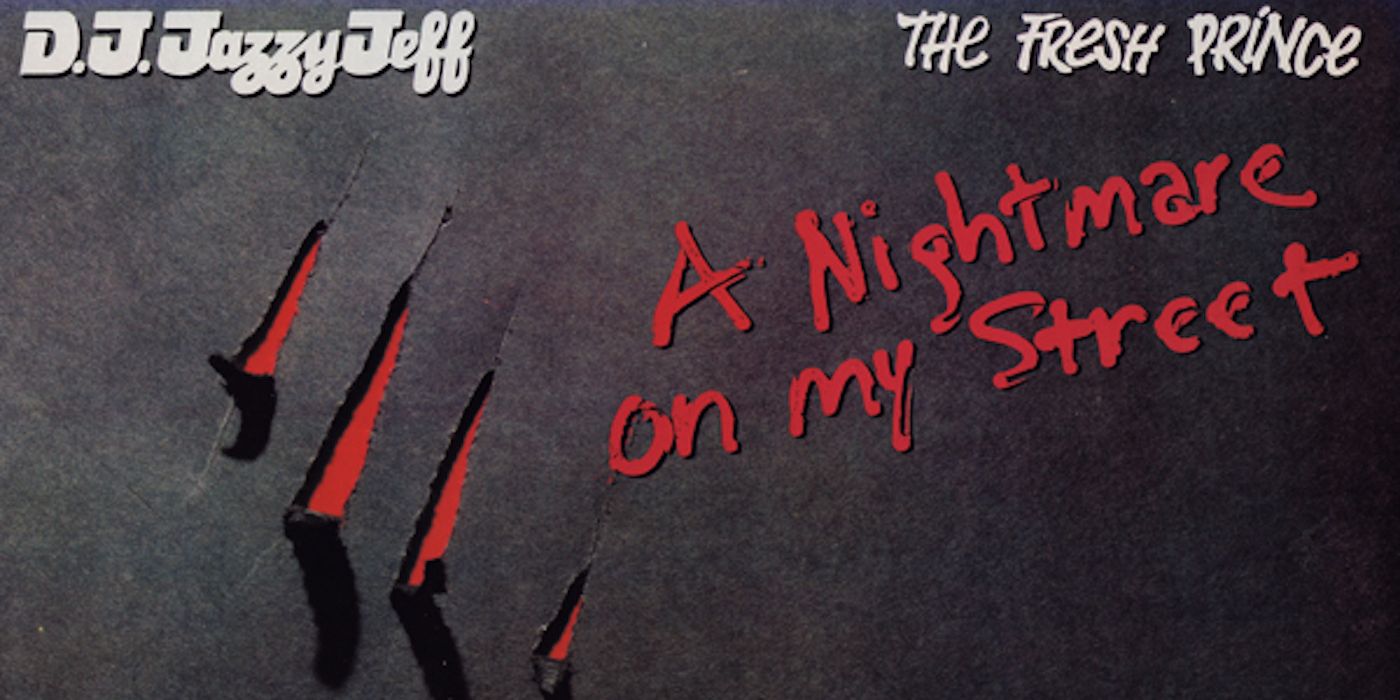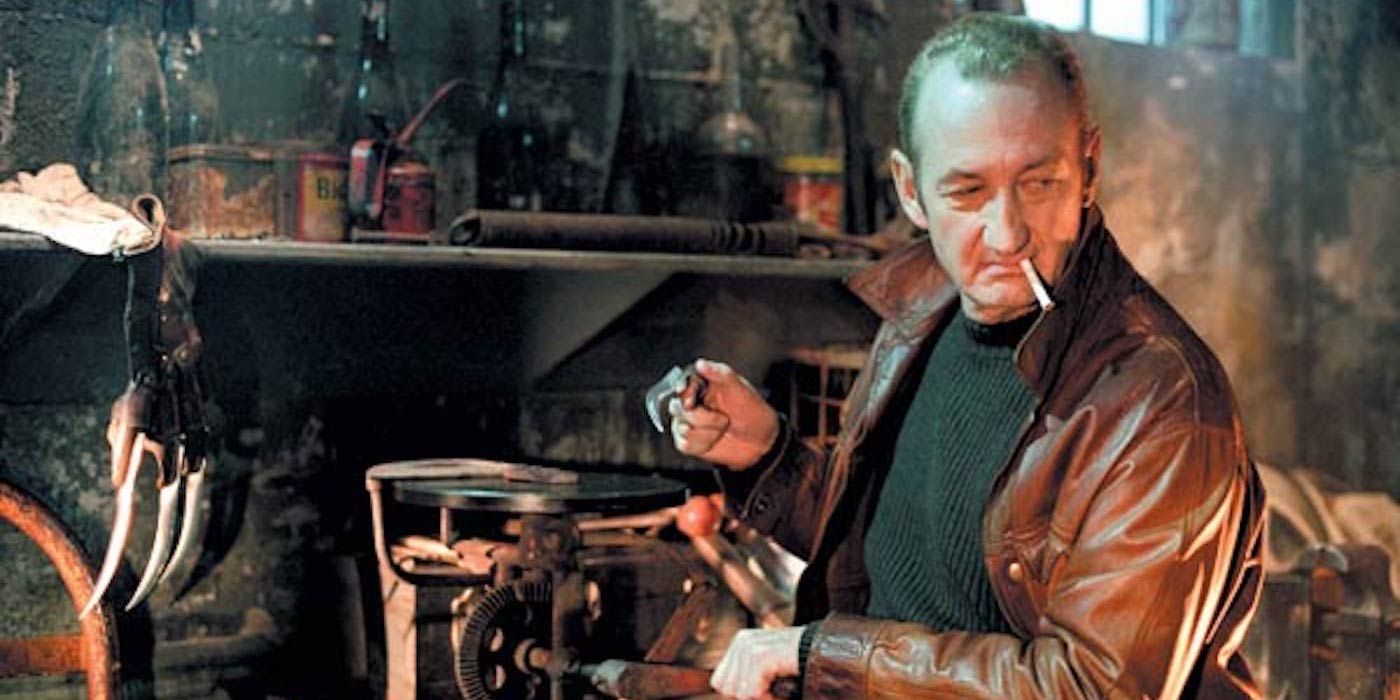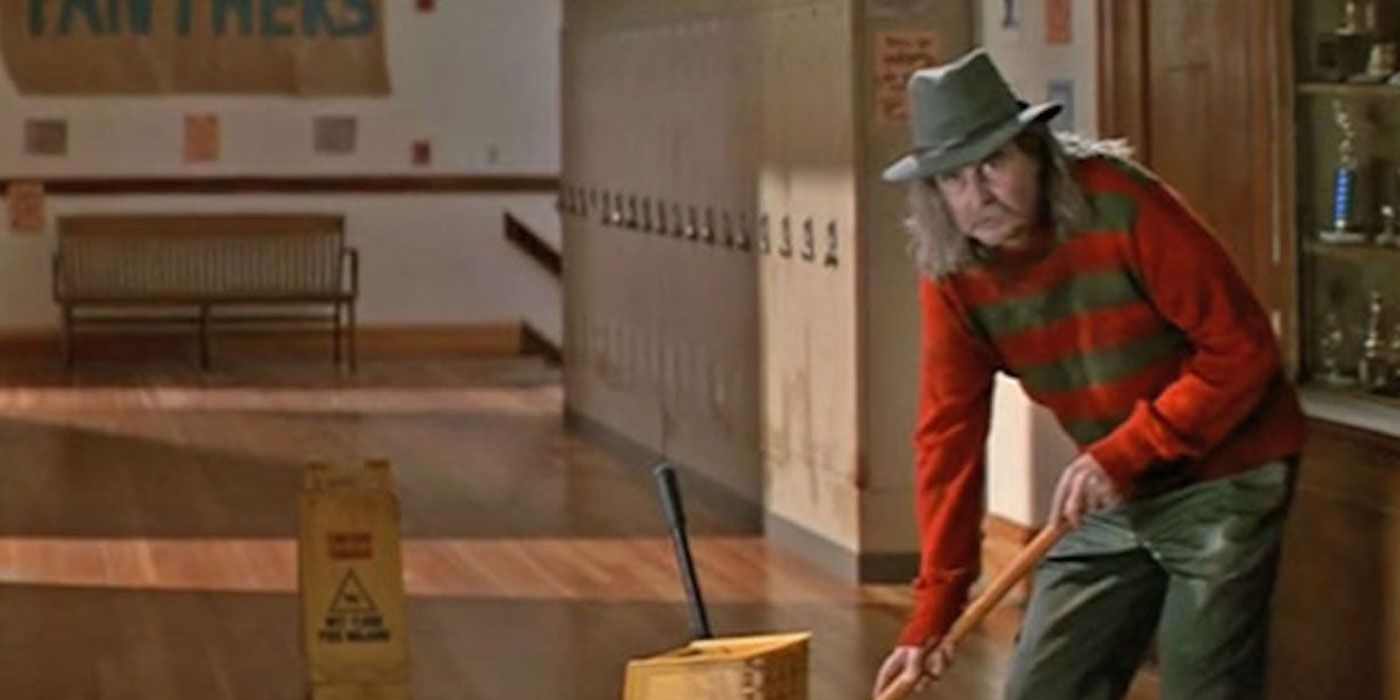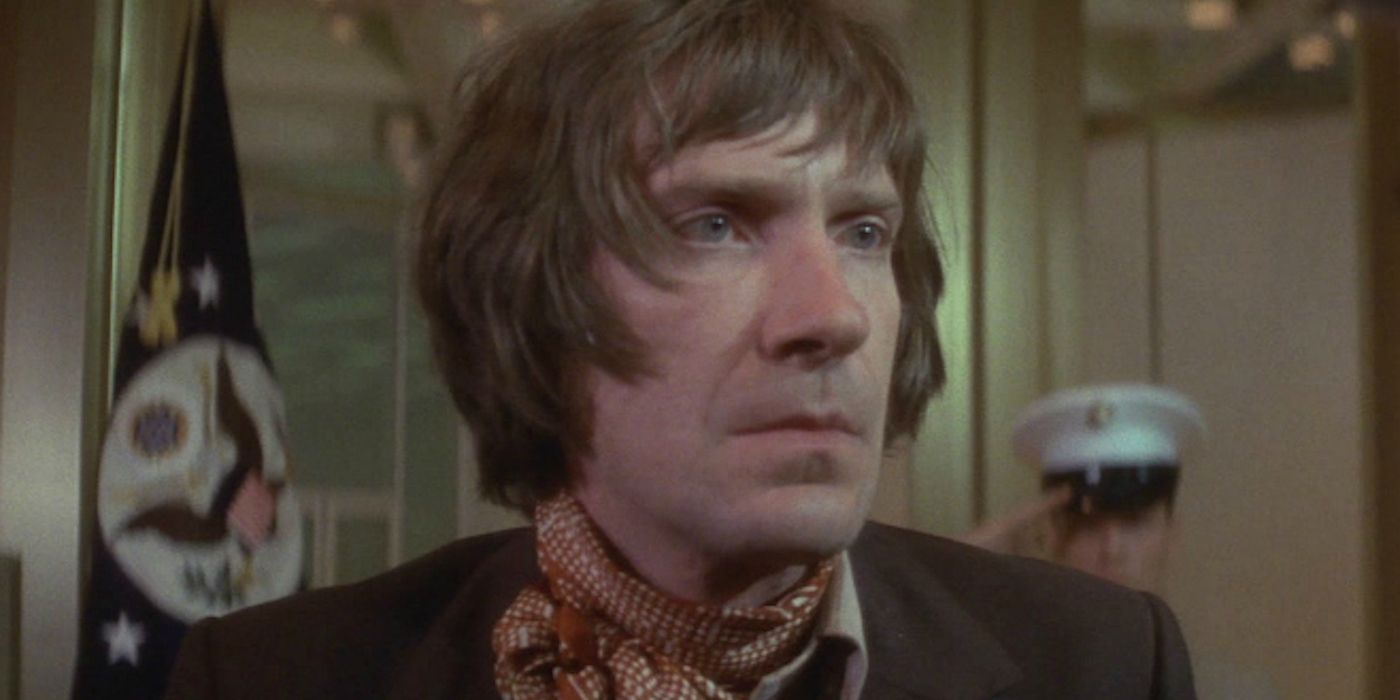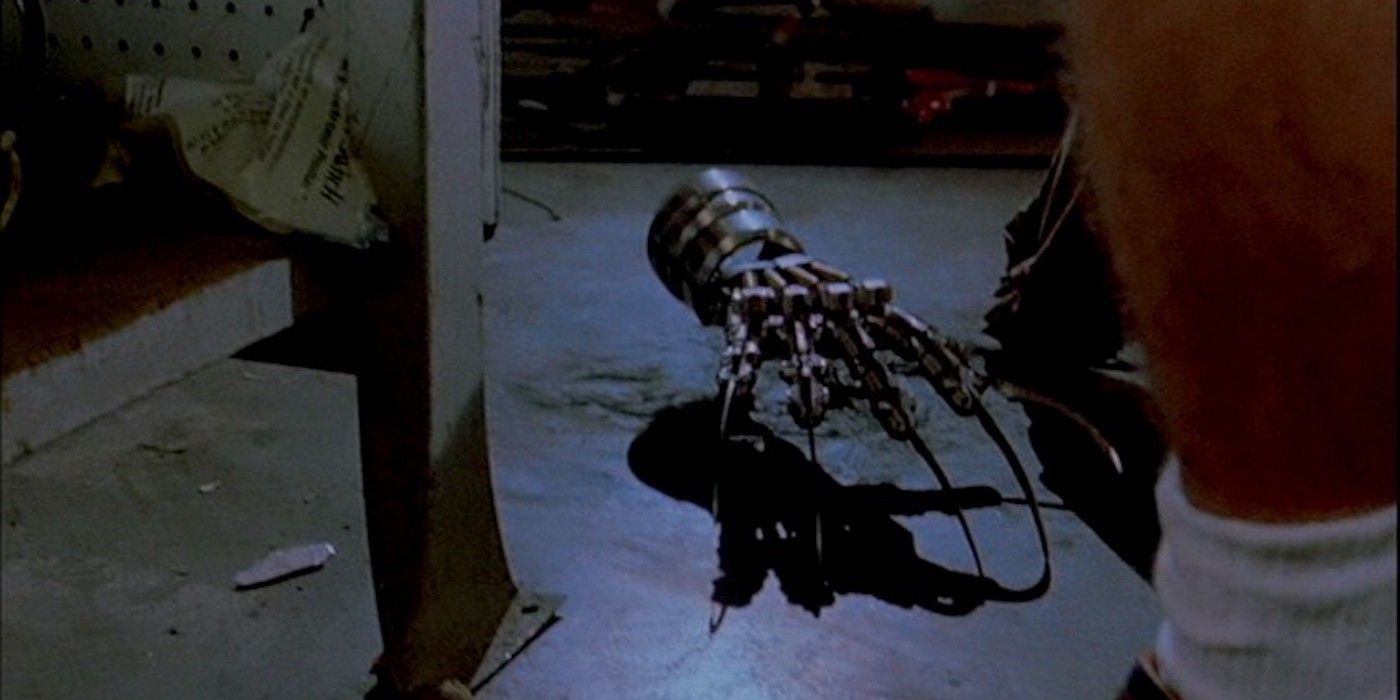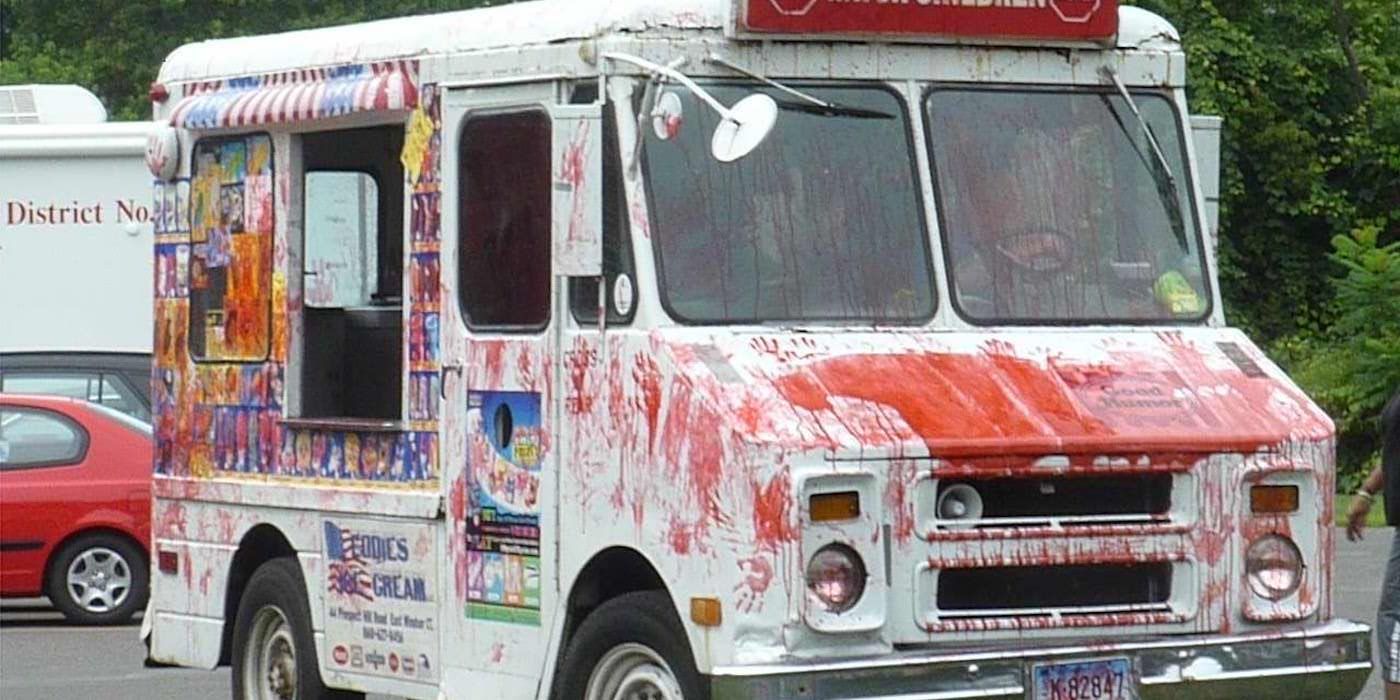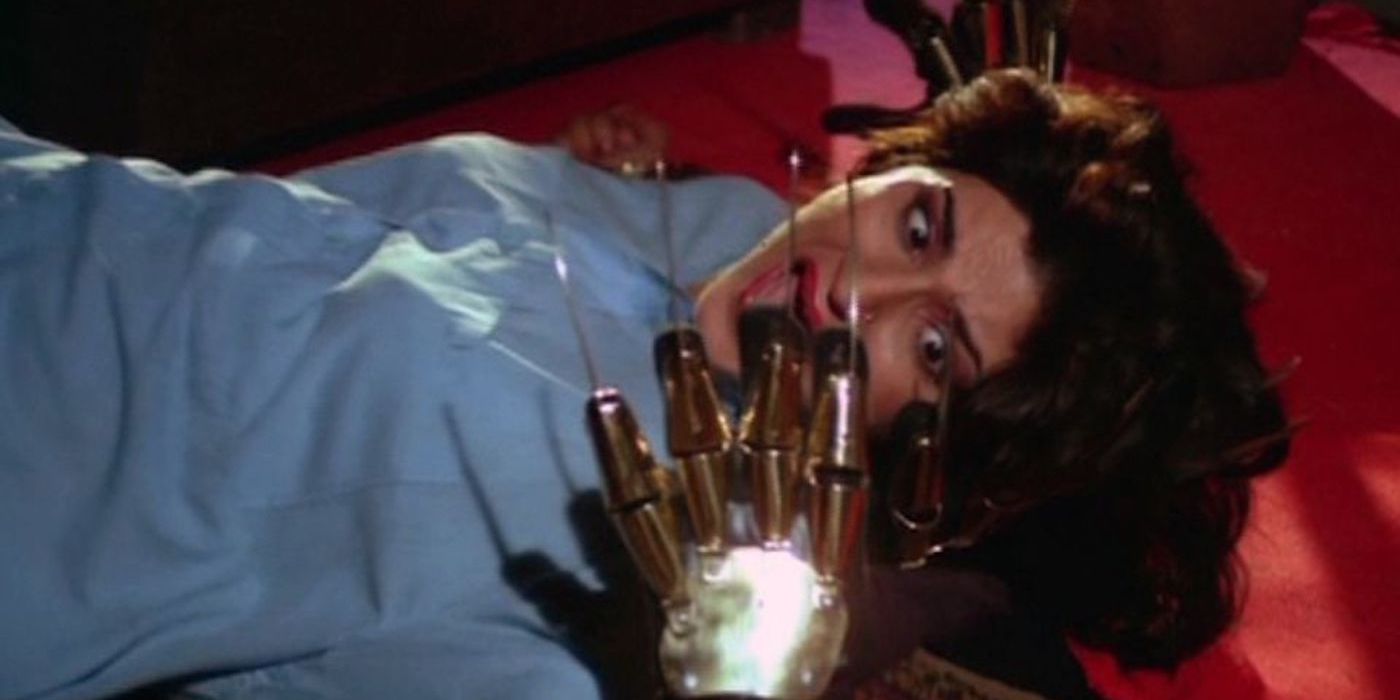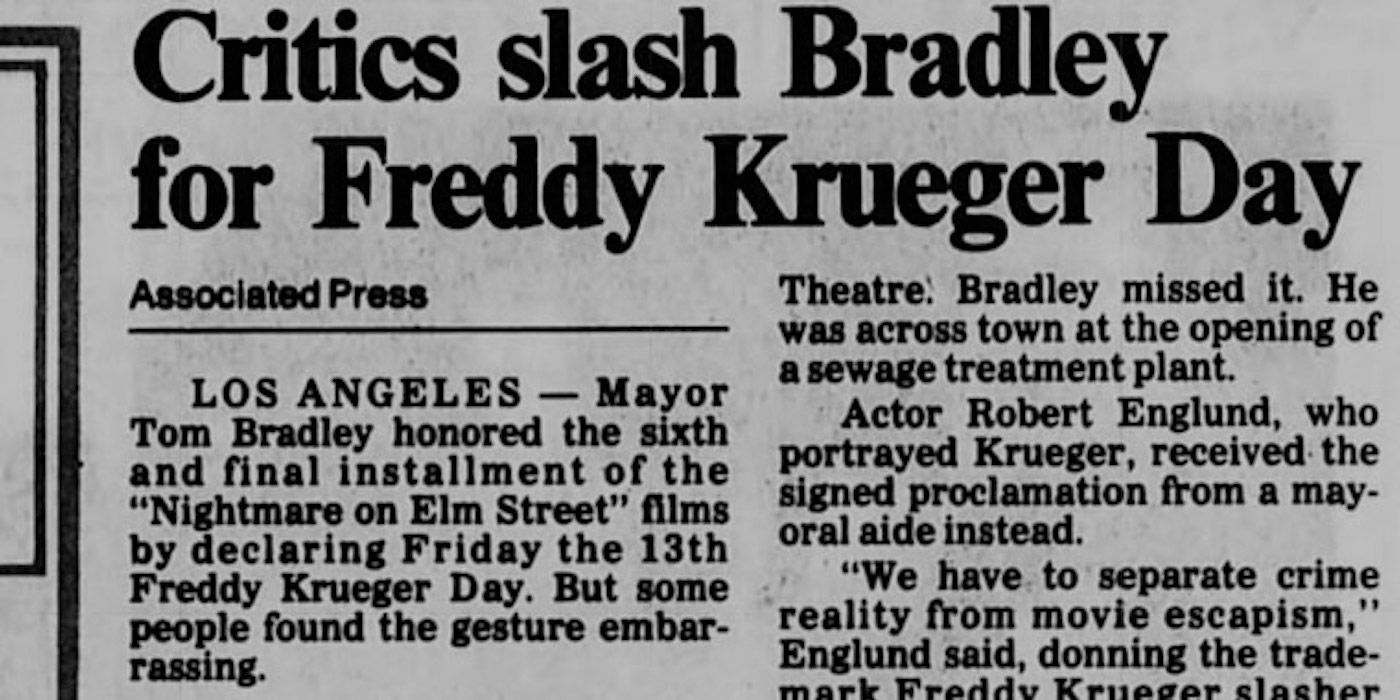One, two, Freddy’s coming for you…
Three, four, better lock your door…
It’s hard to create not only a successful horror franchise, but also one that introduces audiences to a new mascot for the genre that actually has staying power. Whether you’re a rabid Nightmare on Elm Street fan, or somehow have done yourself the disservice of never dipping into the franchise, there’s no denying that the films’ icon, Freddy Krueger, is practically a household name in horror. Wes Craven’s genre juggernaut has been haunting dreams and making viewers terrified to go to sleep for the span of eight films, if you include the time he goes toe-to-toe with Jason Voorhees in Freddy Vs. Jason, since the character’s debut in 1984. The horror villain has gained such notoriety he’s even found himself appearing in the Mortal Kombat series as a fighter. That’s the sort of honor that doesn’t just go to some B-movie, third shelf level monster like Pumpkinhead or Leprechaun!
Freddy might have been frightening you for over thirty years now, but how well do you really know the wisecracking dream invader? In honor of Freddy’s undying legacy, Here are 16 Things You Didn’t Know About Freddy Krueger.
16. He’s in the Original Nightmare on Elm Street For Only 7 Minutes
Much like how Steve Urkel’s presence would steadily grow and take over Family Matters as the show went on, Freddy Krueger too would be increasingly crammed into the Nightmare sequels. It would not be hard to imagine some future Nightmare installment being entirely from Freddy’s perspective, perhaps chronicling his days in Hell. Freddy and his pitch-black sense of humor and horror might be the reason that a lot of people check out the Nightmare films now, but it’s almost shocking to learn how little Freddy Krueger actually appears in the first film in the series. Freddy is only in A Nightmare on Elm Street for seven minutes of the 101-minute feature, which seems impossible. Craven does an excellent job at making Krueger’s presence felt even when he isn’t there. He’s being discussed constantly, for example, keeping him always on one's mind. With horror, less can certainly be more, with this being a perfect example of how Krueger dominates this picture even though he’s only present for a tiny fraction of the duration.
15. He Was in a Nightmare Prequel Directed by Tobe Hooper
Even though this may seem like some bizarre dream that’s induced by Freddy himself, the man behind Texas Chain Saw Massacre and Poltergeist actually got to play around with Freddy Krueger. Rather than Tobe Hooper getting to dig into the more supernatural, postmortem side of Krueger, he curiously steps in to handle an unofficial prequel of sorts. There was a phenomenon during the late ‘80s and ’90s where popular horror franchises would be spun out into anthology series that would bear little resemblance to their film counterparts. Many horror fans are aware of the two-season oddity, Freddy’s Nightmares, but less are savvy to the fact that the show’s pilot is actually a Nightmare prequel featuring Englund himself. In “No More Mr. Nice Guy” Hooper turns back the clock to when Krueger is on trial for his crimes. The episode is light on the horror but it does a good job depicting the chapter of Freddy’s life that leads to his violent death at the hands of an outraged mob. Hooper helms a bizarre little detour in Freddy’s lore here, but die-hard “Fred Heads” are still going to want to check this out.
14. He Has a Wife and Daughter
While sometimes pulling back the curtain on a villain and demystifying them can be a huge mistake for certain series, Nightmare on Elm Street's choice to sparingly dip into the territory of Freddy’s backstory was a positive one. Elm Street 3: Dream Warriors offers audiences a healthy glimpse of who Freddy really is, but Freddy’s Dead: The Final Nightmare goes one step further and tries to explain the genesis of Freddy’s pain. In a delightfully awkward 3D segment (God bless the ‘90s), audiences learn that Freddy had a wife named Loretta Krueger that even found out about his murderous ways, but still took his side and chose to love him. This doesn’t stop Freddy from eventually killing Loretta, by strangling no less, and in front of their daughter, Katherine. Katherine’s identity even becomes a crucial factor in Freddy’s Dead in terms of taking Krueger down once and for all. With how awful Freddy was to his family, it’s almost better if you didn’t know that he had one.
13. His Infamous “Primetime” Line Was Improvised
Nightmare on Elm Street 3: Dream Warriors is one of the stronger entries in the Nightmare canon and is seen as a popular fan favorite choice within the series. A lot of this might have to do with the fact that the great Frank Darabont is responsible for Dream Warriors’ script, but even though the film’s dialogue is some great work, one of Freddy’s all-time famous lines actually came from Englund playing around and going method. In one of Dream Warrior’s most famous scenes, Jennifer goes to watch some late-night TV to help keep herself awake (not to mention putting cigarettes out on herself). It’s not long before she’s drifting off and Freddy’s calling the shots. Right before he slams Jennifer’s head into the TV and electrocutes her, he leaves her with the parting words, “Welcome to primetime, bitch!” As perfectly “Freddy” as the line is, the scripted response is actually, “This is it, Jennifer, your big break on TV!” Englund did a few takes with the scripted line before going off in his own direction, with director Chuck Russell ultimately editing the two takes together. The spontaneous idea would soon become one of Freddy’s most quotable lines.
12. His Biggest Ally is the Shoddy Legal System
As Freddy Krueger’s history is explained in the original Nightmare on Elm Street, it touches upon the fact that when Freddy was on trial for all of the murdering he did, he manages to avoid prison on a technicality. Both A Nightmare on Elm Street and the pilot episode of Freddy’s Nightmares touch on Freddy’s arrest proceedings, however they differ when it comes down to what exactly helped the man get away with murder. Elm Street says that police gathered evidence without a search warrant, whereas Freddy’s Nightmares claims the police failed to read Freddy his Miranda rights.
Regardless of which version you choose to go with, both depict loopholes in the legal system and the shoddiness of police officers leading to Freddy avoiding any prison time. None of the films attempt to say much when it comes to the law, but because Krueger doesn’t go to jail for his crimes, the public end up taking justice into their own hands which leads to the birth of Krueger’s immortal transformation. If Krueger had ended up going to jail, humanity might have been spared a dangerous monster and who knows what else would have been different!
11. His First Victim Was His Adoptive Father
Freddy’s Dead, the sixth entry in the Nightmare on Elm Street series, was conceived to be the concluding chapter in the story, with the film dipping into a lot of background material as a result. The 3D flashback sequence that becomes a centerpiece of the film shades in a lot of details regarding Freddy’s human years and his time as the Springwood Slasher. A lot of people are naturally curious of how famous horror monsters got their start, or rather, who their first kill was, and Freddy’s Dead happily provides. Freddy killing his father, Edward Underwood, is the action that opens the floodgates for the character’s sin, which is something that feels particularly appropriate. The sequences becomes all the more surreal by the fact that Alice Cooper is the one playing Freddy’s father, at that! Freddy might have had plenty to say to a therapist over his father, but his issues with his mother are even more twisted. Elm Street 4: Dream Master even sees her briefly taking control of Freddy by trapping him back inside of her womb. A little patricide seems relatively normal in comparison to that.
10. He’s Killed Morpheus
When you’re a horror villain that’s as popular as Freddy Krueger is, it’s only natural for there to be some cross pollination that sees the sharp-fingered foe appearing in other pillars of pop culture. Satirical institutions like The Simpsons, Family Guy, and Rick and Morty have all given their own specific slant on the horror villain, but the character has gotten particular mileage within the crazy world of South Park. In South Park’s brilliant “Imaginationland” trilogy, the sharp cartoon mashes together virtually every franchise in existence. This lends itself to some bonkers sight gags, like a rather inspired Saving Private Ryan homage, but one of the best happens to involve Krueger himself. In one of the many scenes of all-out warfare and chaos that is experienced in Imaginationland, Freddy Krueger can be seen fighting alongside other villains. In a short amount of time, Krueger not only manages to kill The Matrix’s Morpheus, but still have time to fit in some torture and death for Strawberry Shortcake. South Park would once more enlist the help of Krueger in a clever Inception parody that involves the government recruiting him for his very specific dream-based skills.
9. He Was Stood Up on Prom Night
It might seem a little ridiculous to picture Freddy Krueger out on prom night, but even some of the biggest monsters in horror still had to make it through high school and social awkwardness. The first episode of Freddy’s Nightmares might have connected things to Freddy by chronicling his trial and murder, but the show’s final episode also manages to tie things back to Krueger in an interesting way, too. In “It’s My Party and You’ll Die If I Want You To,” Freddy’s Nightmares sees Krueger crashing his high school reunion and basically putting on his best Carrie impression. It’s kind of a strange delight to see Freddy massacring his entire graduating class, but the reason he’s seeking vengeance in the first place is because the prom date that stood him up is attending the reunion. Audiences might not have been picturing Freddy as a suave ladies’ man during his teen years, but the fact that this super intimidating monster went through the same tortured high school experience as many of his victims is a little humanizing.
Now if only the prom had a theme like, “A Dream Come True.” That’s something that Freddy really could have worked with.
8. He’s Rapped with Will Smith, the Fresh Prince
Invading someone’s dreams and distorting their sense of reality is frightening stuff, but what’s really scary is someone throwing harsh rap beats at you. Will Smith, under his rap moniker, Fresh Prince (along with DJ Jazzy Jeff), actually wrote an Elm Street based rap that actually features Freddy Krueger himself. The rap number, “A Nightmare on My Street” was written for the Nightmare on Elm Street 4 soundtrack, however New Line rejected the track. After some ridiculous legal battles, New Line allowed Will Smith to release the track, only denying its Elm Street connection, a gesture which is kind of ridiculous since once again, Freddy is in the song. New Line forced Smith to release the track with the following disclaimer: “[This song] is not part of the soundtrack…and is not authorized, licensed, or affiliated with the Nightmare on Elm Street films.”
New Line probably had the right idea here as this is the silliest version of rap, as Smith spouts out lyrics like, "He's burnt up like a weenie and his name is Fred!" The track even ends with Freddy murdering DJ Jazzy Jeff and assuming his role in Smith’s music career, declaring, “I’m your DJ now, Princey!”
7. His Legacy as the Springwood Slasher was Put in Jeopardy by a Rival Slasher
Even before Freddy Krueger became the undead monster serial killer that would kill dozens of teens in their sleep, he was already cutting his teeth as the reputable Springwood Slasher. Krueger made the inhabitants of Springwood, Ohio forever nervous in a chilling demonstration of the fear that the killer could conjure, in both life and death. Dipping once more into the lore of the killer, an episode of Freddy’s Nightmares entitled “Do Dreams Bleed?” (which is almost Philip K. Dick-ian in its elegance) sees another serial killer menacing the residents of Springwood, with Krueger’s legacy facing competition here. Freddy’s Nightmares introduces “The Springwood Chopper,” a serial killer who targets teenage couples in love. When Freddy hears of the Chopper’s growing reputation and that he runs the risk of building a more enviable body count than Freddy himself, he takes it upon himself to deal with the Chopper and get him out of the picture. Sometimes rivalries can bring out the best in people.
6. He is Based Off of Real-Life Frightening Figures From Wes Craven’s Life
Learning the inspirations and stories behind cinema’s scariest monsters always proves to be fascinating. Sometimes surreal experiences or lucid dreams can lead to the birth of monsters, while other times when the wonderfully mundane is cast in certain lights it can take on a much more sinister life. Wes Craven built Elm Street’s boogeyman from more of the latter approach, with the name Freddy coming from the name of a bully who would terrorize Craven in elementary school. Additionally, Krueger’s signature hat was an item that was worn by the local drunk, another figure in the community that would terrify Craven during his youth. Then, the icing on the fright cake comes in the form of Krueger’s iconic red-and-green striped sweater. Craven had read an article in Scientific American that the human eye struggles to recognize these two shades when they’re next to each other, with the combination being “subliminally unsettling.” Voila! That’s how you build a horror icon! The character is a personal cocktail of elements that irk Craven out.
5. He Was Originally Supposed to be Played by David Warner
Look, Robert Englund is Freddy Krueger. Nobody is going to argue that. Not even Jackie Earle Haley. That being said, a curious chain of events could have seen a very different interpretation of Freddy hitting the screens, with the mind reeling at what that series of films would have looked like. British actor, David Warner, was set to play the role until scheduling conflicts ultimately forced him to drop out of the project. Warner would have surely taken a more methodical, maniacal take to the role, playing him as more of a traditional villain.
Englund’s take on the character is now famous, but he based his performance off of Klaus Kinski’s work in Nosferatu as well as the character work of James Cagney, subtle touches which all slowly receded into his own performance. Interestingly enough, New Line temporarily re-cast the role of Freddy with a stuntman after they thought Englund was asking for too much money in Nightmare’s first sequel. New Line quickly realized the error of their ways and reversed their decision, but it’s crazy to think how little the man behind the mask was being recognized at first.
4. Knife Commercials and Cats Inspired His Iconic Weapon
When trying to design Freddy Krueger and the rest of the first Nightmare feature, Craven was adamant that Freddy Krueger have some interesting, original sort of killing tool rather than just another machete, or God forbid, a gun. While it should still be the character that’s shining through and not their weapon, Craven didn’t see why it couldn’t be both. Michael Myers and Jason Voorhees are both arguably as famous as Krueger is, but their weapons certainly aren’t! A random blade isn’t going to conjure up the same fear that Freddy’s famous knife glove is going to. He doesn’t even need to be there! That’s how powerful it is. After seeing how crucial this weapon is, it’s surprising to learn that Craven’s inspiration here was his fear of his own cat’s claws as well as a series of late-night infomercials that focused on selling knives that he frequently would find himself watching. It’s a bizarre combination of elements here, but when the results can be this successful it makes you wonder why more pets and infomercials haven’t been mined for their worth in horror. Think how different Leatherface could have been if Hooper had a pet hamster!
3. He Wanted to Be an Ice Cream Truck Driver
Nothing against ice cream men, but there’s something inherently creepy about the profession. Then again, examples of horror like Stephen Kind’s Mr. Mercedes or the Tales From the Crypt episode “People Who Live in Brass Hearses” aren’t doing the job any favors either. The niche would have likely seen an even larger setback if Freddy was allowed to follow his dreams and become an ice cream truck driver, presumably using it as a front to continue his killings. Using Freddy’s Nightmares as a reference point one more time, Hooper’s pilot episode, “No More Mr. Nice Guy,” sees Krueger getting an ice cream truck back into working shape once he’s let off as a free man. Of course, before Freddy is able to really focus on his career in ice cream and give it the old honest try, mob justice gets the better of him. One can’t help but imagine a short film or side story project that explores Krueger’s days selling ice cream, attempting to redeem his name, as his baser urges to continue to try and get the better of him. Put someone like Brad Anderson or Alexandre Aja in charge and you’ve got a winner.
2. He Has a Bollywood Counterpart
It’s not unusual for Bollywood cinema to turn to the blockbuster world of Hollywood for inspiration and the subject matter to base some of its larger productions off of. While this adaptation process can sometimes lead to some fairly disastrous films that get lost in translation, Nightmare on Elm Street’s Bollywood equivalent, Mahakaal, is a rather fascinating experiment. To begin with, Mahakaal isn’t some slap-dash Bollywood production. The Ramsay Brothers, who have been dubbed the unofficial Kings of Indian Horror, were put in charge of the production. The Ramsays stay pretty close to the Nightmare formula and have their Krueger equivalent killing a bunch of college students in their sleep. There’s just also a bunch of singing, dancing, and some inexplicable mysticism thrown in for good measure, too. Part of the fun of watching Mahakaal is wondering if you’re not just experiencing a Freddy Krueger-induced nightmare in the first place. Somehow Bollywood cinema wasn’t rushing out to make a crossover film, Mahakaal Vs. Ghutan anytime soon!
1. He Has His Own Holiday
It’s always remarkable to see the ridiculous heights that marketing for horror films will hit in some occasions. Advertising is never afraid to go to scary, invasive places, with the supposed final entry in the Nightmare on Elm Street series feeling like it was particularly worthy of a holiday to celebrate its value. After all, horror fans were routinely turning Friday the 13ths and Halloweens into excuses to host Jason Voorhees and Michael Myers marathons, so didn’t Freddy also deserve his day?
In conjunction with the release of Freddy’s Dead, New Line talked Los Angeles into declaring Friday, September 13th as “Freddy Krueger Day.” As absurd of a gesture as this may be (plenty of locals were angered and worried that such a holiday would give license for people to become murderers), all of the Nightmare films were produced within Los Angeles, meaning the franchise had put a lot of money into the local community as well as providing them labor. While the official status of “Freddy Krueger Day” is currently up in the air, horror fans still stand by it strongly and true “Fred Heads” known when to throw Krueger some love.
Over the course of eight films, Freddy Krueger sure gets up to a lot of craziness with there surely being some surprising trivia on the villain that we’ve hit the snooze button on. Show us how big of a Freddy fan you are in the comments below!

